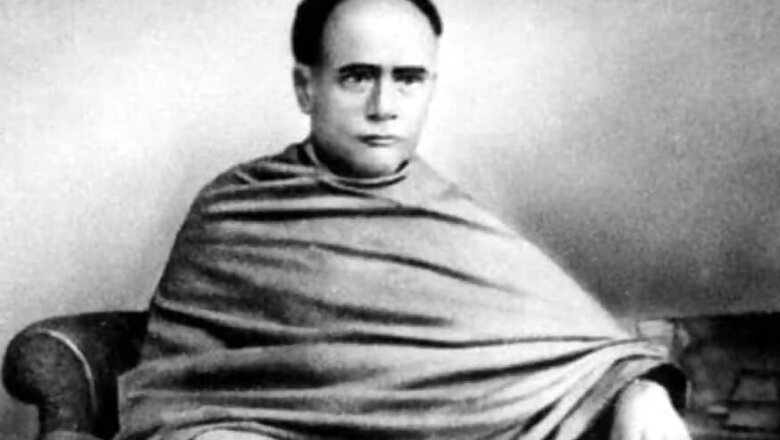
views
Ishwar Chandra Bandyopadhyay, a key figure of the Bengal Renaissance, was a Bengali polymath who was born on September 26, 1820. A philosopher, educator, publisher, reformer and philanthropist, his efforts to simplify and modernise Bengali prose is well documented. One of the most prominent campaigner for widow remarriage among Hindus, he also received the moniker 'Vidyasagar', meaning the ocean of knowledge, from Sanskrit College for his knowledge in the language and philosophy.
On the great personality's 199 birth anniversary, here's looking at his contributions to society.
Vidyasagar championed in women causes in India. One of his major characteristics was that unlike his contemporaries, who sought to create alternate societies, he attempted to change society from within and with the help of noted contemporaries like Akshay Kumar Dutta, introduced the practice of widow remarriage to mainstream society.
Furthermore, Vidyasagar was strongly opposed to the then prevailing custom of Kulin Brahmin polygamy, which allowed elderly men, sometimes on their deathbeds, to marry teenage or prepubescent girls, supposedly to spare their parents the shame of having an unmarried girl back home. Many times, these 'brides' would be left behind at their paternal places without a second glance specially if they were subsequently widowed. Subjected to semi-starvation and a hard life many of them would flee and become prostitutes. Vidyasagar sought to change this as well.
Another contribution by Vidyasagar was the fact that he reconstructed the Bengali alphabet and simplified the Bengali typography into 12 vowels and 40 consonants. The Bengali alphabet had remained unchanged since Charles Wilkins and Panchanan Karmakar had cut the first Bengali type in 1780. He made significant contributions to Bengali and Sanskrit literature with works like Borno Porichoy being considered a classic.




















Comments
0 comment